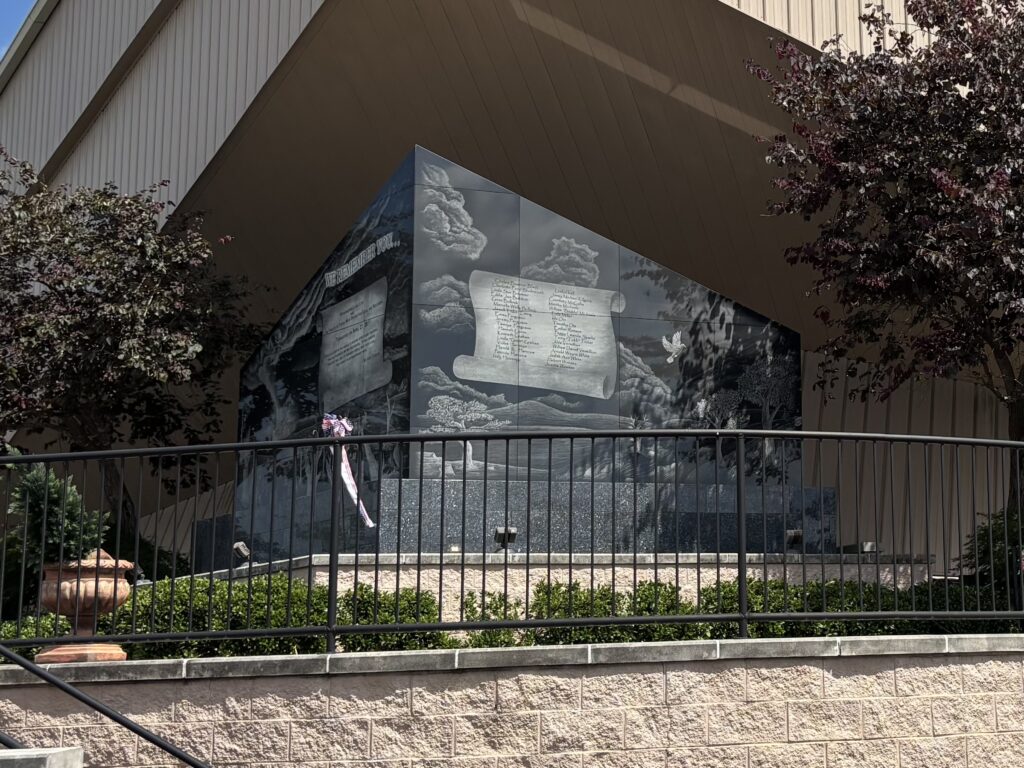5 significant Civil Rights sites in Alabama, including the Edmund Pettus Bridge
Reading time: 5 minutes

In the mid 20th century, several locations throughout Alabama played key roles in the Civil Rights Movement—from Rosa Park’s stand in Montgomery to the Children’s Crusade in Birmingham and everywhere in-between. We took a look at several places of significance in Alabama to learn more.
Birmingham
16th Street Baptist Church

Founded in 1873, the 16th Street Baptist Church was the first black church built in the fledgling city of Birmingham. Though the original structure was condemned and forced to be demolished by the city in 1908, the congregation quickly raised funds for a second, larger church that still stands today. Throughout the years, the 16th Street Baptist Church has hosted a number of distinguished guests, such as W.E.B. DuBois, Jackie Robinson and Ralph Bunche—the first African-American recipient of the Nobel Peace Prize. During the Birmingham Campaign of the Civil Rights Movement, the 16th Street Baptist Church served as a “home base” for demonstrators to gather and recuperate.
On September 15th, 1963, members of the Ku Klux Klan detonated a bomb on the east side of church. The explosion killed four young girls—Addie Mae Collins (14), Carole Robertson (14), Cynthia Wesley (14) and Denise McNair (11)—and injured twenty-two others. The bombing shocked the nation, and marked a turning point in the Civil Rights Movement.
Bethel Baptist Church

Home of prominent Civil Rights activist Reverend Fred Shuttlesworth, the Bethel Baptist Church in Birmingham played an important role during the Civil Rights Movement. From 1956 to 1961, the building served as the headquarters for the Alabama Christian Movement for Human Rights (ACMHR), an organization led by Rev. Fred Shuttlesworth.
Due to its importance to the movement, Bethel Baptist Church was targeted by racially-motivated bombers three times. The first bomb, which detonated on Christmas night 1956, damaged the church and destroyed the parsonage where Rev. Fred Shuttlesworth slept. Miraculously, Shuttlesworth was protected from the blast and debris by his mattress—he emerged from the ruined structure unscathed.
In the late 1990s, the Bethel Baptist Church congregation moved to a new sanctuary. The original building currently operates as a museum and monument to the Civil Rights Movement.
Kelly Ingram Park

Located in the heart of the Birmingham Civil Rights District, Kelly Ingram Park was the site of many large-scale Civil Rights demonstrations in Birmingham in the 1960s. The park is named for Osmond Kelly Ingram, an Alabama native who was the first enlisted serviceman from the United States killed in the First World War.
During the Civil Rights Movement, Birmingham police and firemen jailed and attacked demonstrators in the park with firehoses and police dogs. Infamous images from these confrontations spurred a national outcry and generated public support for the movement.
Now, Kelly Ingram Park features monuments and statues to Civil Rights icons such as Martin Luther King Jr. and the four young girls killed in the 16th Street Baptist Church bombing. From Kelly Ingram Park, guests can easily visit the 16th Street Baptist Church, the Birmingham Civil Rights Institute and more.
Montgomery
National Memorial for Peace and Justice

A recent addition to the list, the National Monument for Peace and Justice in Montgomery is a national memorial to African-American victims of lynchings throughout the United States. The memorial is funded by the Equal Justice Initiative.
Inside the memorial are 805 hanging, steel rectangles—each the size and shape of a coffin. Each of these steel rectangles corresponds with a county that has documented racial terror lynchings. In order to help reconcile with their past, the Equal Justice Initiative has invited each county to retrieve and place their memorial within the community.
Selma
Edmund Pettus Bridge

Next to the historic St. James Hotel in Selma, Alabama is the Edmund Pettus Bridge. Built in 1940, the bridge was named for Edmund Winston Pettus, a Confederate brigadier general and member of the Alabama Ku Klux Klan.
On March 7th, 1965, around 600 Civil Rights protestors—including future U.S. Representative John Lewis—attempted to cross the Edmund Pettus Bridge during the Selma to Montgomery marches. The unarmed and peaceful protestors were attacked by police and state troopers. Images from the attack helped galvanize public support for the Civil Rights Movement.
More Alabama Sites in the U.S. Civil Rights Trail
The 16th Street Baptist Church, Bethel Baptist Church, Kelly Ingram Park, National Memorial for Peace and Justice and the Edmund Pettus Bridge are just a few of the many locations with significance for the Civil Rights Movement in Alabama. To learn more, check out the Alabama section of the US Civil Rights Trail.







